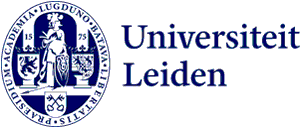
'When I talked about the materials for an energy transition in 2010, people almost started to laugh'
In order to build wind turbines and electric cars, we need tons of magnets. Currently, we import these mainly from China, which means Europe is very dependent on this superpower for the energy transition. This has to change, according to industrial ecologist René Kleijn. In the REEsilience project, he is going to work with an international team to make Europe self-sufficient. 'We are not only going to write analyses, we will build actual infrastructure as well.’
'The name REEsilience gives it away already: a resilient rare earths life cycle in Europe,' says Kleijn. 'This project focuses specifically on the raw materials needed for the production of magnets. Those magnets are in fact an essential part of wind turbines and electric cars. And thus also an essential part of the energy transition.'
Continuation of an earlier magnet project
REEsilience is the successor of the European funded project SUSMAGPRO that stands for: Sustainable Recovery, Reprocessing and Reuse of Rare Earth Magnets in a European Circular Economy. 'SUSMAGPRO is all about recycling magnets. We do so by developing technologies to make new magnets from old material, for example.'
We really promise to build infrastructure that will allow us to process material ourselves.
At REEsilience they take this one step further. They not only look at recycled magnets, the so-called secondary streams, but also investigate primary sources. 'Where could we extract materials in Europe? And how sustainable is the extraction and processing of materials in China compared to other countries?'
More than analyses and reports
The project has been running since mid-July and is receiving a European Horizon Grant for four years. 'Our goal is much more concrete than just analyses and reports. We really promise to build infrastructure that will allow us to process material ourselves.'
In predecessor SUSMAGPRO, the team takes a practical approach as well. For instance, they test and use the recycled magnets. 'Both consortia include companies that actually use the magnets, for example in speakers. And it turns out: the recycled magnets perform just as well, or sometimes even better, than new magnets. This shows that products made with recycled materials are at least as good as products from new materials.'
Urban mining in the people’s drawer
That's good news, since it means we don't need a constant supply of materials to make new products. 'That is if we take good care of the materials we have. And if we can recycle them well.'
Products made with recycled materials are at least as good as products from new materials
Currently, this is not always the case. Just think of the amount of electronics that people have at home in their drawers: old phones, speakers or laptops that nobody uses any more. 'We are looking for ways to recover and reuse all those materials. That concept is called urban mining: literally a mine of materials in the city.'
Playing with material chains
TU Delft is also a partner in the project. Benjamin Sprecher, a former PhD student of Kleijn's, is now working there and has specialised in the system-dynamic analysis of material chains. 'Sprecher analyses the whole chain of the material, from mining to the final product. Then he looks where things can go wrong. Suppose the Suez Canal is closed, or a geopolitical conflict arises, what impact does that have on the chain?'
By mapping out all the steps, you can play with the chain links. 'What if you shut down a certain country? What is the effect on the price, where do other mines open, how long does it take and where is the delay? In this way, you can model the entire dynamic.'
Many partners ensure a big result
Kleijn himself will mainly work on the sustainability analyses of the possible scenarios. 'We compare primary and secondary sources, look at material flows and compare possible scenarios for the future. How can you obtain the necessary raw materials for the energy transition in the most sustainable and responsible way? The nice thing is that we work with a lot of technical partners who can actually develop the technologies we need.'
The energy transition is an incredibly important subject. Finally, the rest of the world is finding out about it that as well.
A small role in the transition
Kleijn has been researching the raw materials for the energy transition for years. 'But after Corona and Russia's invasion of Ukraine, governments suddenly realised how dependent we are on other superpowers. That is why they are currently working on policy and vision in this area.'
Kleijn is looking forward to working on the project for the next four years. 'The energy transition is an incredibly important subject. Finally, the rest of the world is finding out about it that as well. When I spoke at a conference in 2010 about the materials for an energy transition, people almost started to laugh. Nowadays, all the governments are writing about it. And I like to think that I at least had a small part in it,' he concludes with a smile.
Text: Inge van Dijck
Photo: Pixabay
